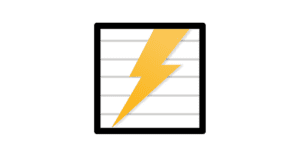HOW TO STRUCTURE A BOARD MEETING AGENDA
A well-structured board meeting agenda can make or break the productivity of the session. Clear, concise, and priority-driven, it ensures all participants remain focused on the key objectives. Let’s explore how successful businesses, like Microsoft, structure their board meetings to align with organizational goals.
Setting a clear agenda not only organizes the meeting but also enhances accountability and facilitates decision-making. It is crucial to structure it effectively to maximize the limited time.
PRIORITIZE IMPORTANT MATTERS
First, prioritize impactful topics. Typically, strategic matters should come before routine updates. Consider an example from Microsoft, where big-ticket issues like product launches or major mergers are prioritized. By doing this, they ensure that high-impact areas are addressed when participants are sharpest and most focused.
ALLOCATE TIME WISELY
Time management is key. For instance, if a topic requires lengthy discussions, designate specific time slots. Apple allocates precise time blocks for significant agenda items, such as new technological integrations or quarterly financial results. This ensures they achieve meeting objectives without detours.
BE SPECIFIC WITH AGENDA ITEMS
Clearly define each agenda item to avoid ambiguity. Include brief descriptors alongside each point. Google’s board uses succinct yet detailed item descriptions. This practice leaves no room for guessing and helps everyone prep adequately.
INCLUDE BACKGROUND MATERIAL
Send relevant materials ahead of time. If discussing financial results, provide past data for comparison. Berkshire Hathaway includes comprehensive packet data, allowing board members to arrive well informed.
ALLOCATE TIME FOR OPEN DISCUSSION
Though structured, allow for open discussions or Q&A sessions. Facebook regularizes an ‘open issues’ slot in their meetings for additional topics that need attention. This can stimulate creative solutions that are otherwise restricted in structured discussions.
REVIEW OBJECTIVES AND ACTION ITEMS
Wrap up by reviewing the outcomes. Assign action items with deadlines. Amazon always reviews objectives at the meeting’s end, ensuring decisions translate into structured actions. This habit builds momentum and keeps the focus on outcomes.
STRUCTURED TIMELY FEEDBACK
Finally, seek feedback immediately after the session. Adobe conducts post-meeting evaluations to refine future agendas continuously. It serves as a feedback loop to identify room for improvement.
In summary, a well-planned board meeting agenda sets the tone for productively achieving strategic outcomes. These structures have worked impeccably for the world’s leading companies.
Editing the documentation related to board meetings is pivotal for clarity and professionalism. At PaperBlazer, we ensure your agendas and minutes are not just grammatically perfect but also tailored to suit your organizational vision.
#BusinessCommunication #BoardMeetings #AgendaStructuring #CorporateSuccess #ProductivityHacks






